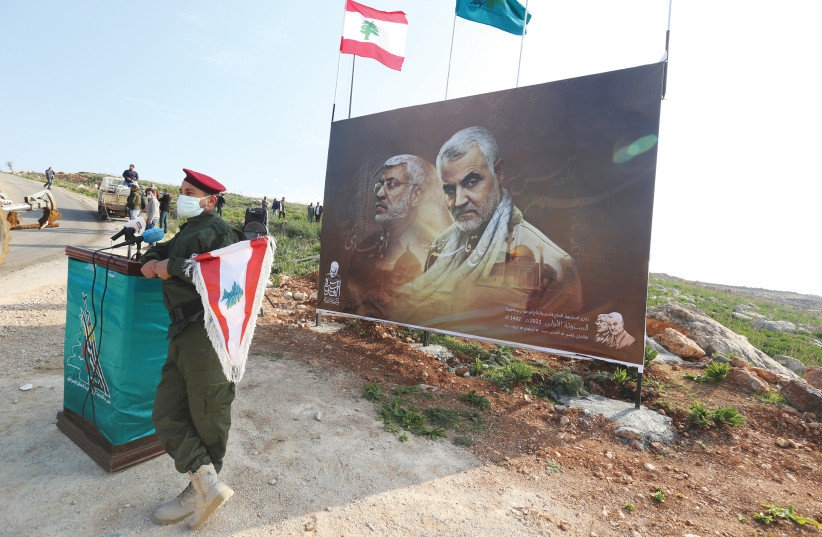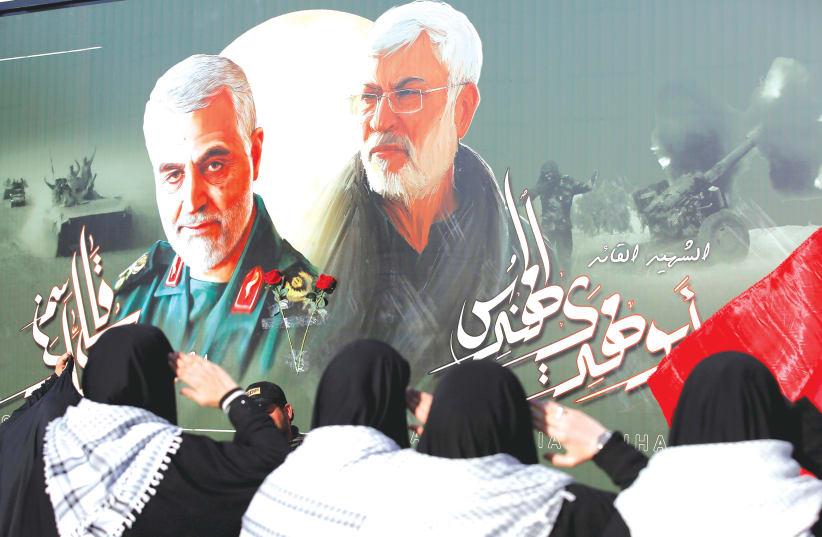Almost two years since the death of IRGC Quds Force commander Qasem Soleimani in a US drone strike while leaving Baghdad international airport with Abu Mahdi al-Muhandis, a Shi’ite militia leader in Iraq, the Iranian media is once again heralding Soleimani as a transformative figure who played a key role in the region.
Together they were coordinating efforts against the US there. Since May 2019 they had been planning and executing rocket attacks on American forces in Iraq, as well as attacks on Saudi Arabia.
Days before they were killed, tensions had risen dramatically and pro-Iranian forces in the country had tried to storm the US embassy.
The accounts of his life generally try to show how Soleimani played such a role in the battle against ISIS. If one of the narratives of his life is that he helped establish Iranian influence and militia roots across the region, empowering Iranian allies and proxies like Hezbollah, Iran has a slightly different story to tell.
A recent article in Iranian media praised Soleimani for his key role in 2014 helping to defend Samarra, a city north of Baghdad, from ISIS.

He helped protect an important shrine even as areas around Samarra, such as Camp Speicher, had been overrun.
The article portrays Soleimani’s bravery and willingness to go by himself into the most dangerous places and in the thick of battle to inspire fighters to stand fast against ISIS.
Other articles have depicted his life in a similar manner. They emphasize that Soleimani, also known as Haj Qasim, was not merely a regional strategic asset for Iran, but was also a commander in the field since the 1980s. An article at Fars News notes how he played an increasing regional and global war in the last decades.
“He enters Afghanistan, Bosnia and Herzegovina, Iraq, Syria, Lebanon, etc.” Fars wrote. “In every field, he creates an epic. Haj Qasim made a statement about Bahrain. See how much people paid attention to this statement at that time. It is not common in the world for a military force [leader] to make a statement. But what did Haj Qasim do that friends and enemies in the world paid attention to this statement?
“From this point on, the further we went, the more Haj Qasim grew,” the report said. “It seems that Haj Qasim’s foundation has reached a stage where he will be martyred at the height of his honor.”
Iran has sought to emphasize that Soleimani helped save Iraq from ISIS and that he played a key role in Syria, as well as helping Kurds fight ISIS in 2014. The conclusion of the articles about him is that his death has not damaged the Quds Force, but rather inspired it to new heights. Whether that is true or not Iran has suffered a number of setbacks in losses of key personnel recently. Iran’s ambassador to the Houthis in Yemen, apparently a high-level IRGC officer as well, recently died.
The Islamic Republic’s remaining key figure in the region is Hassan Nasrallah. He also has problems trying both to control Lebanon and project Hezbollah influence.
The terrorist group has been accused of greater involvement in Yemen, for instance. The question remains whether Iran’s role in the region has suffered a setback with the loss of Soleimani.
Clearly in terms of assets on the ground, Iran plays a huge role from Lebanon via Syria to Iraq and in Yemen. It also plays a role in Gaza with Hamas.
But Iran may be suffering from a bit of imperial overstretch, its economy is hungry for a reduction in sanctions and Iran has to decide if it wants to reduce its destabilizing activities and pivot to work with China, or if the Quds Force model is the only one it knows how to promote.
